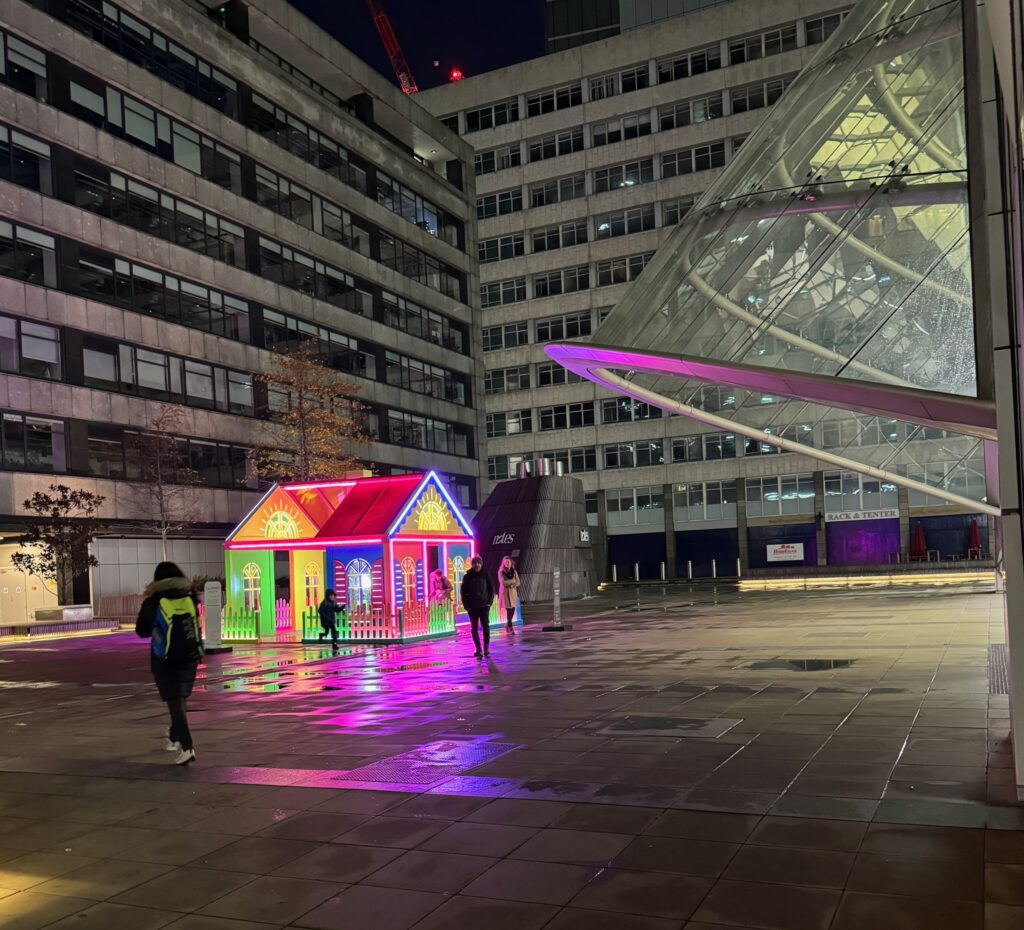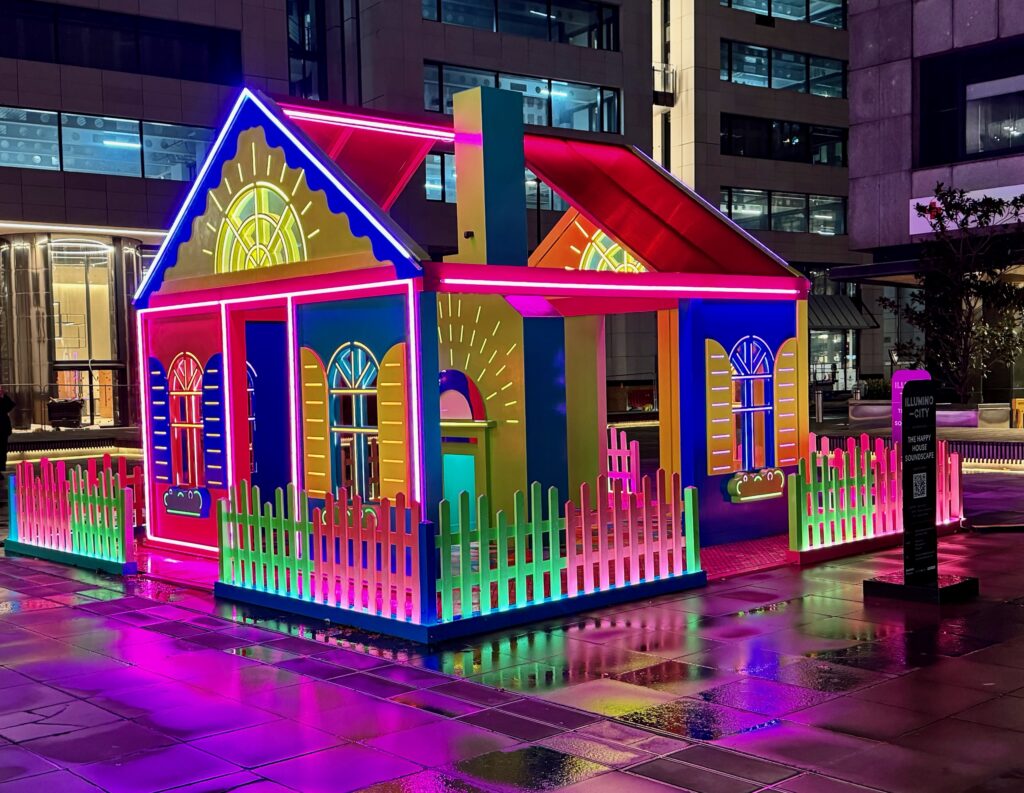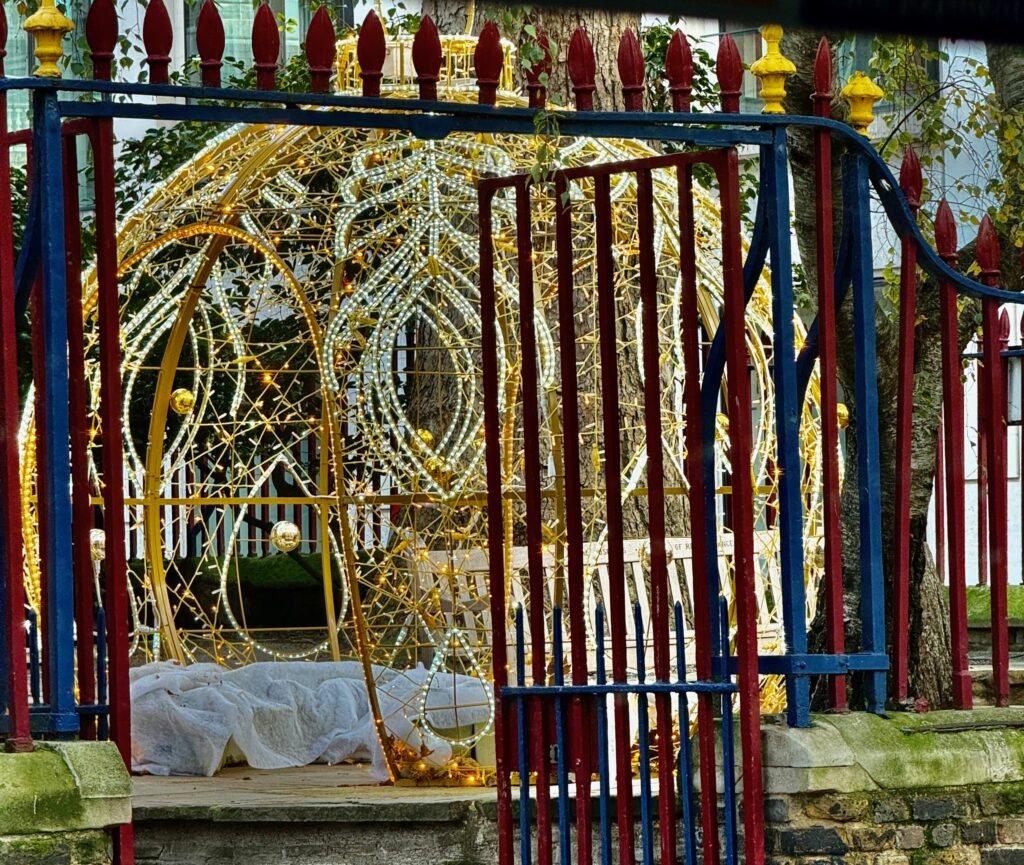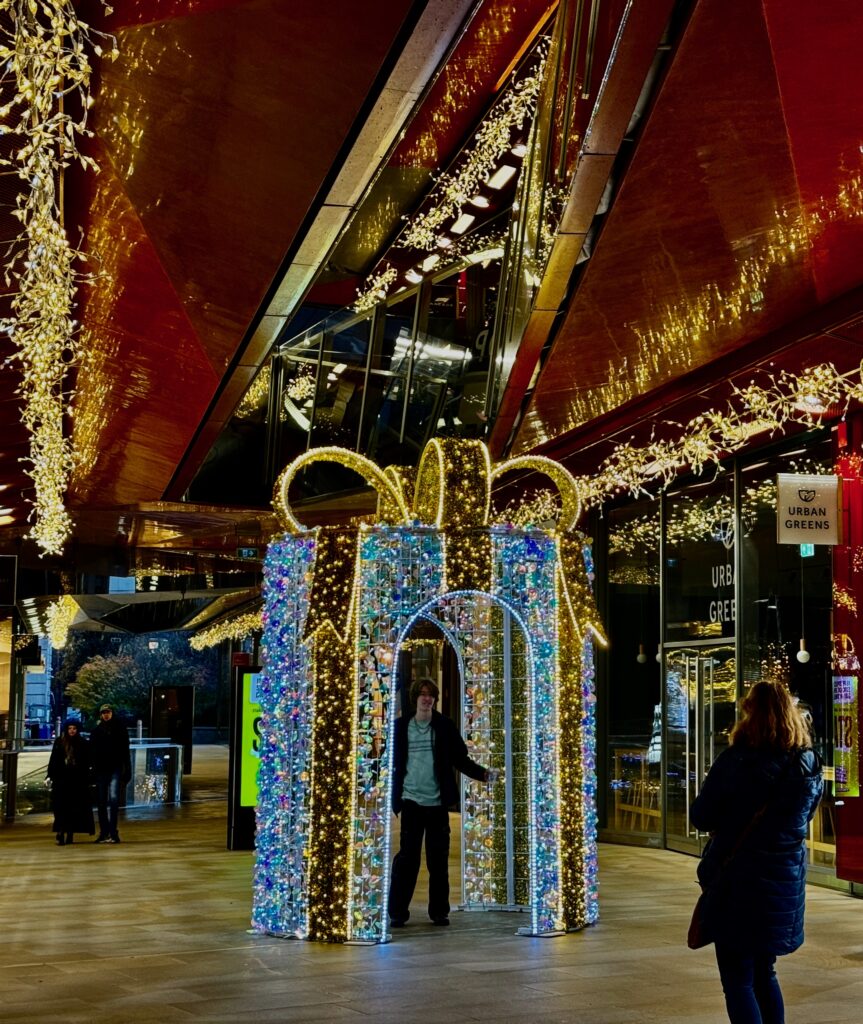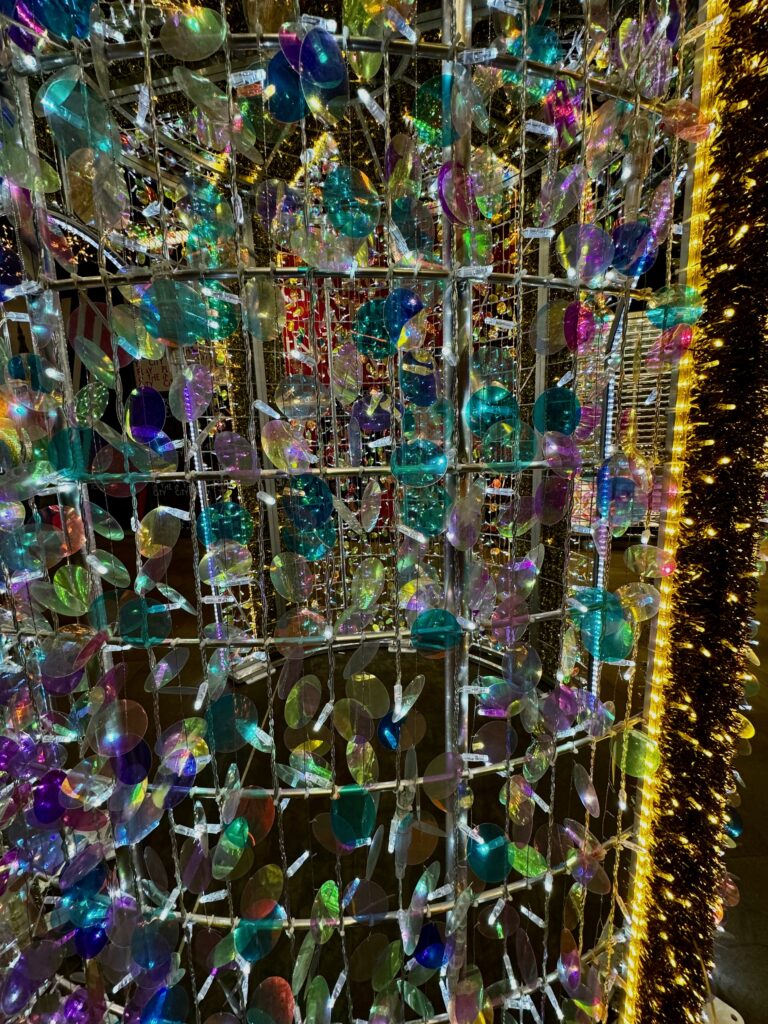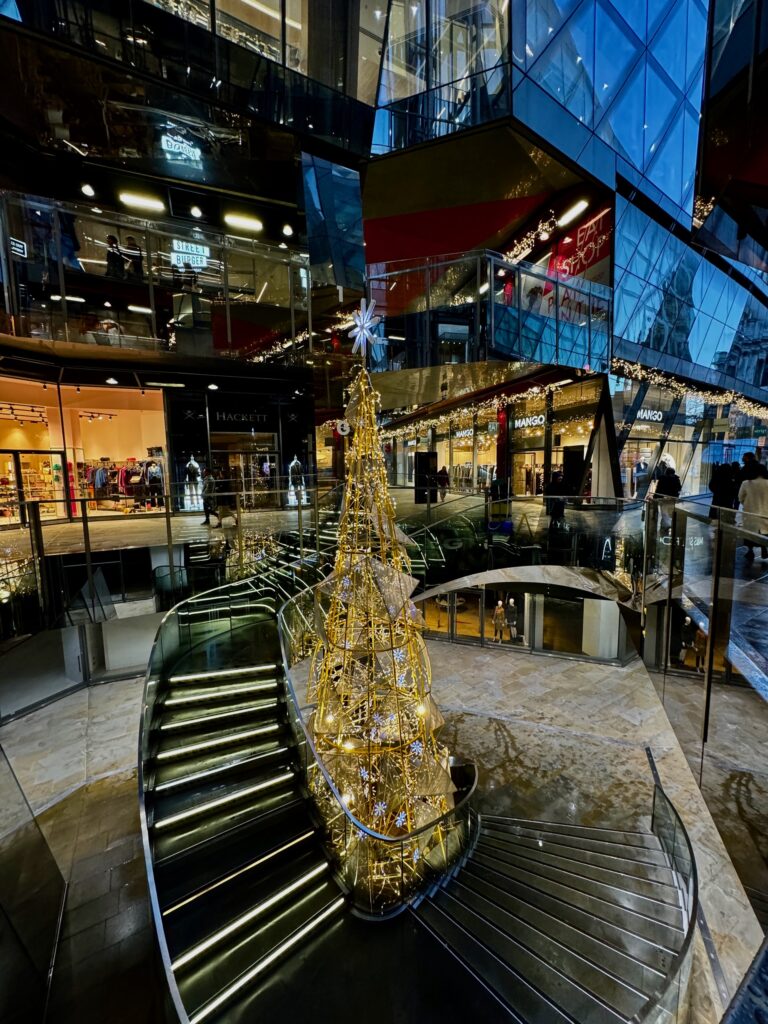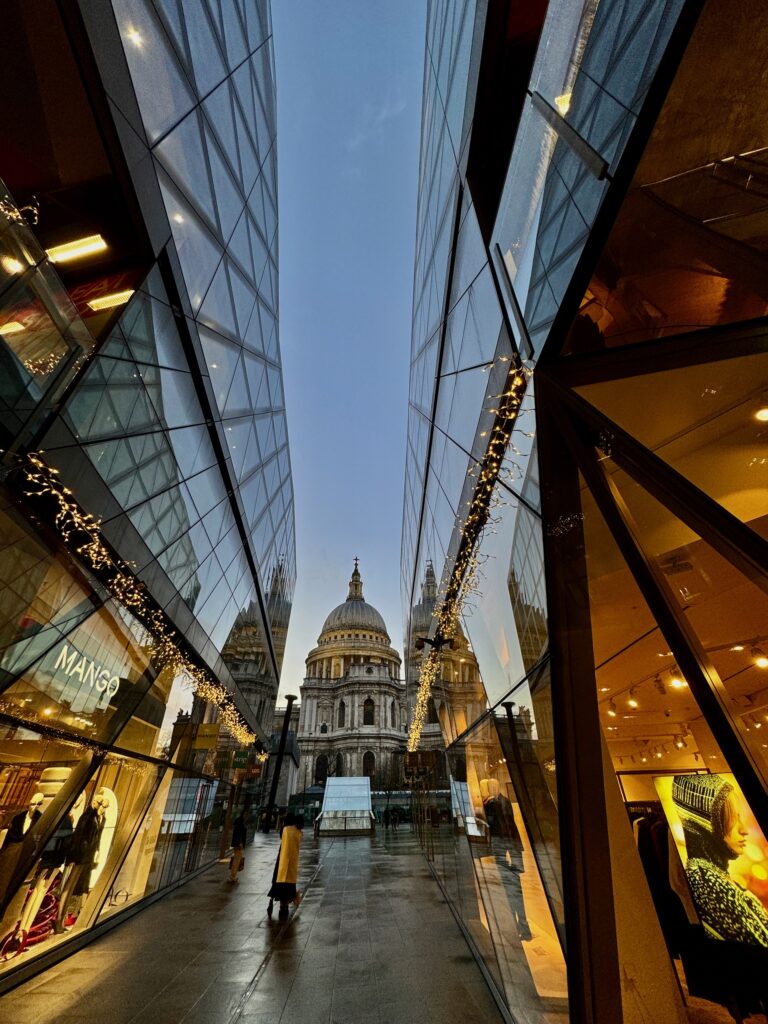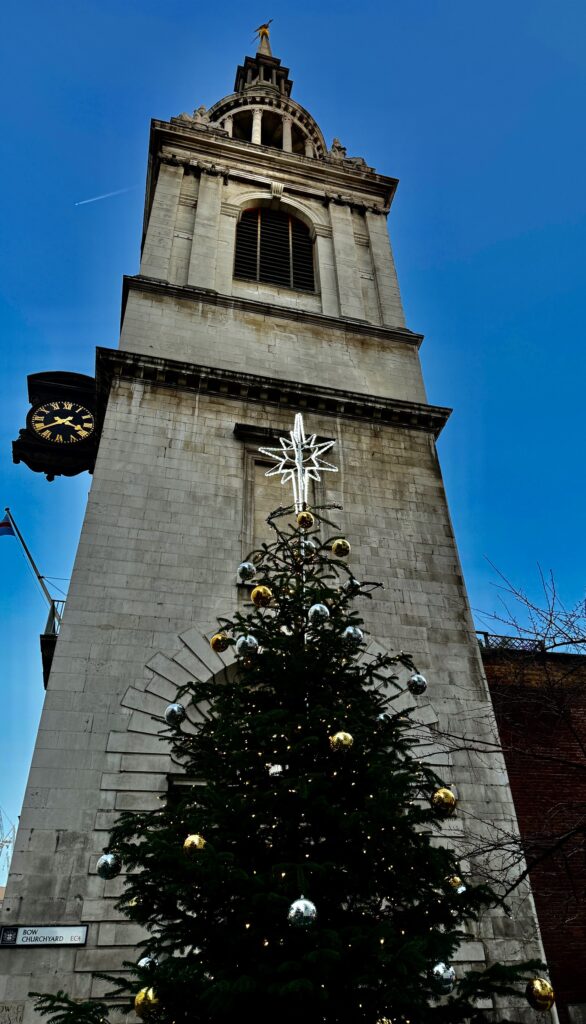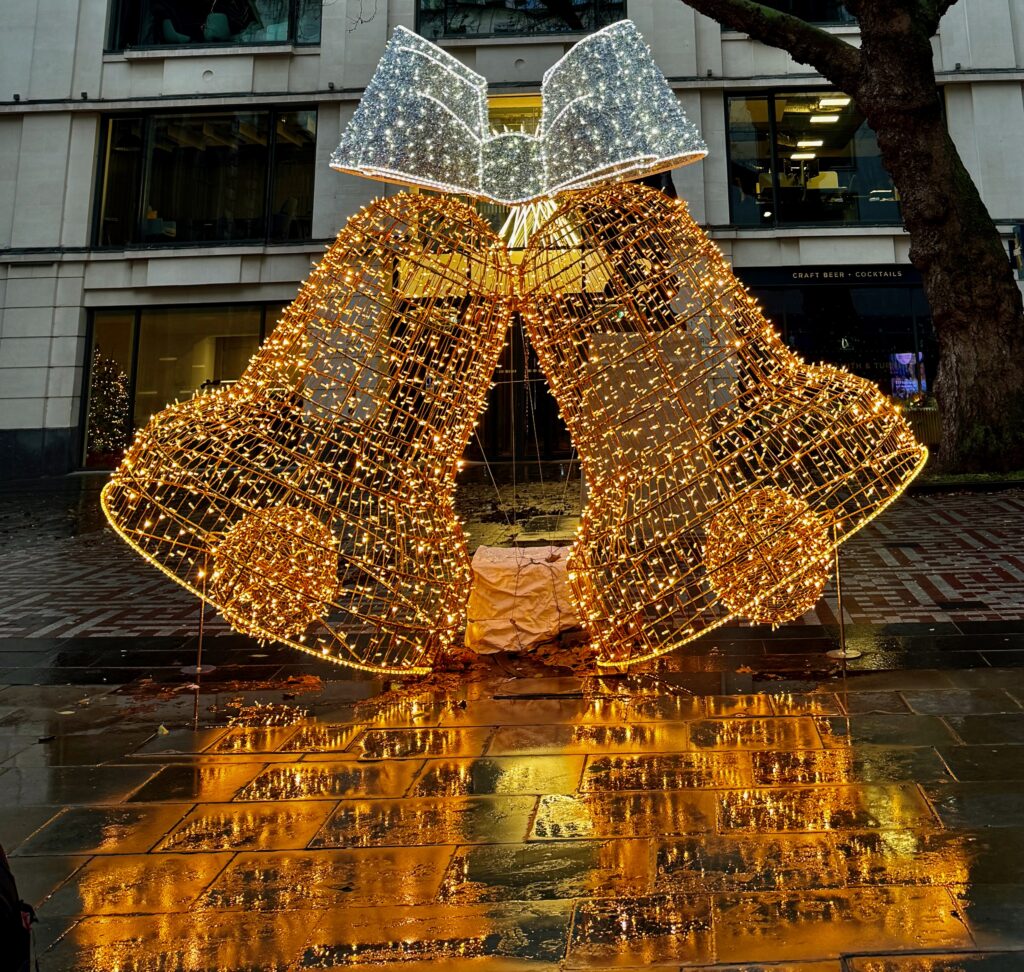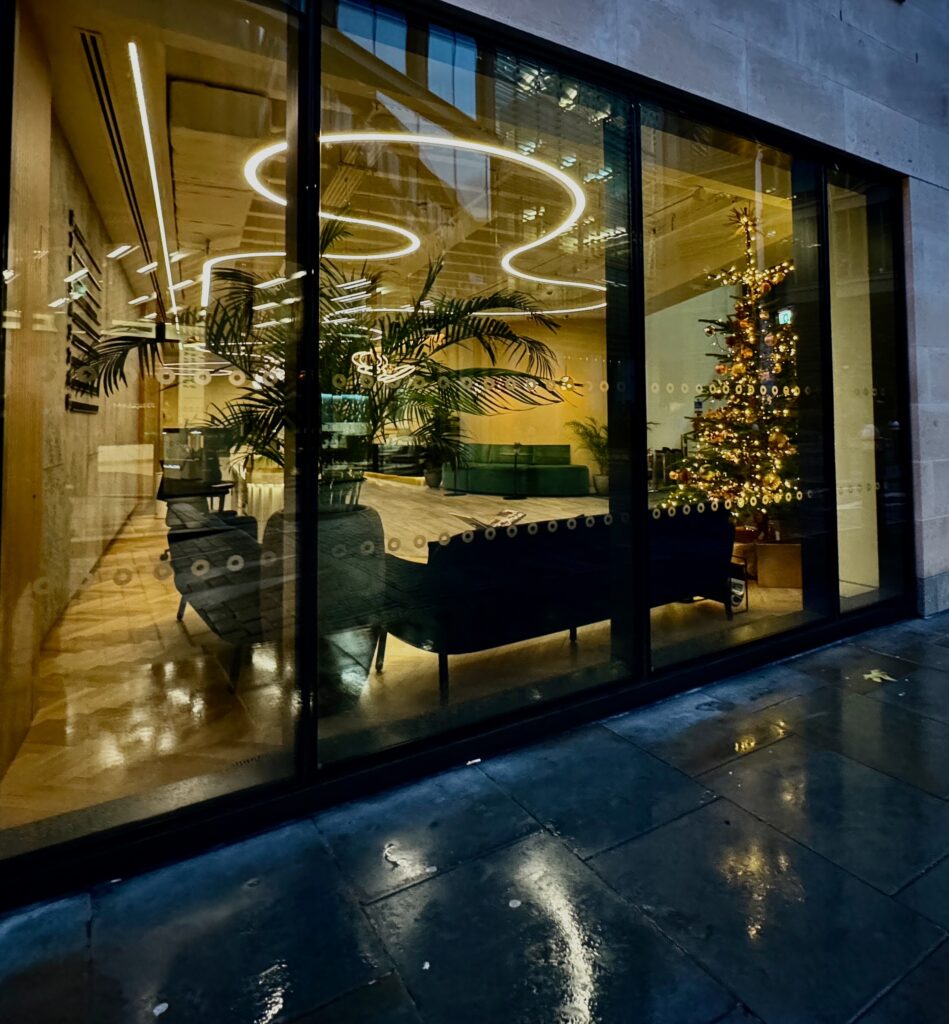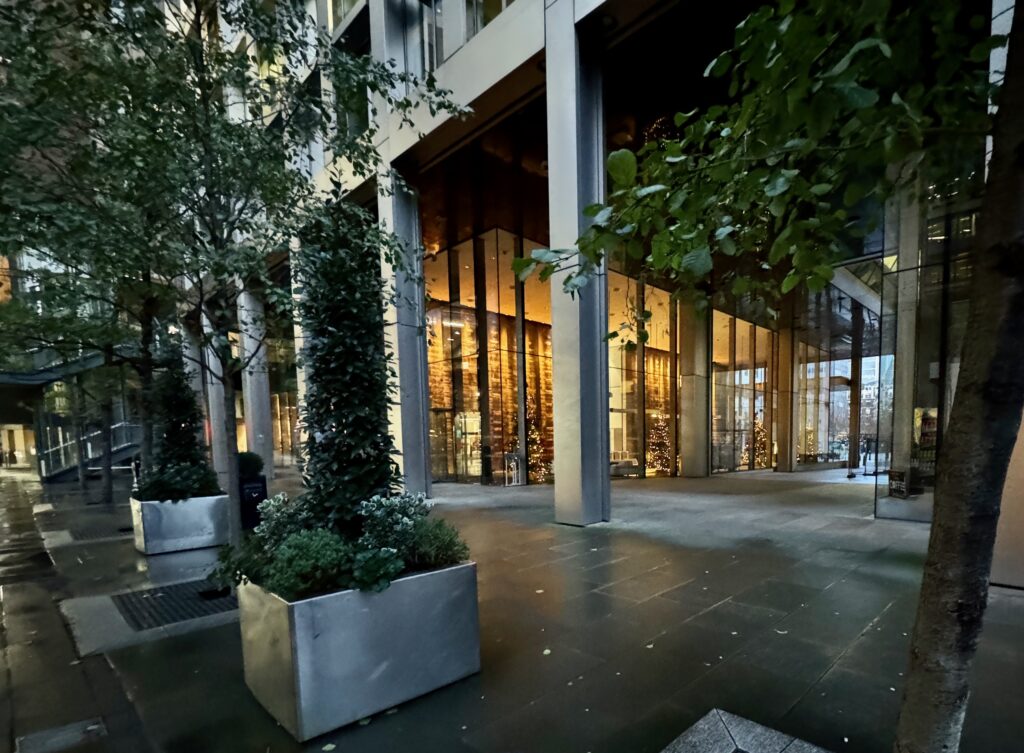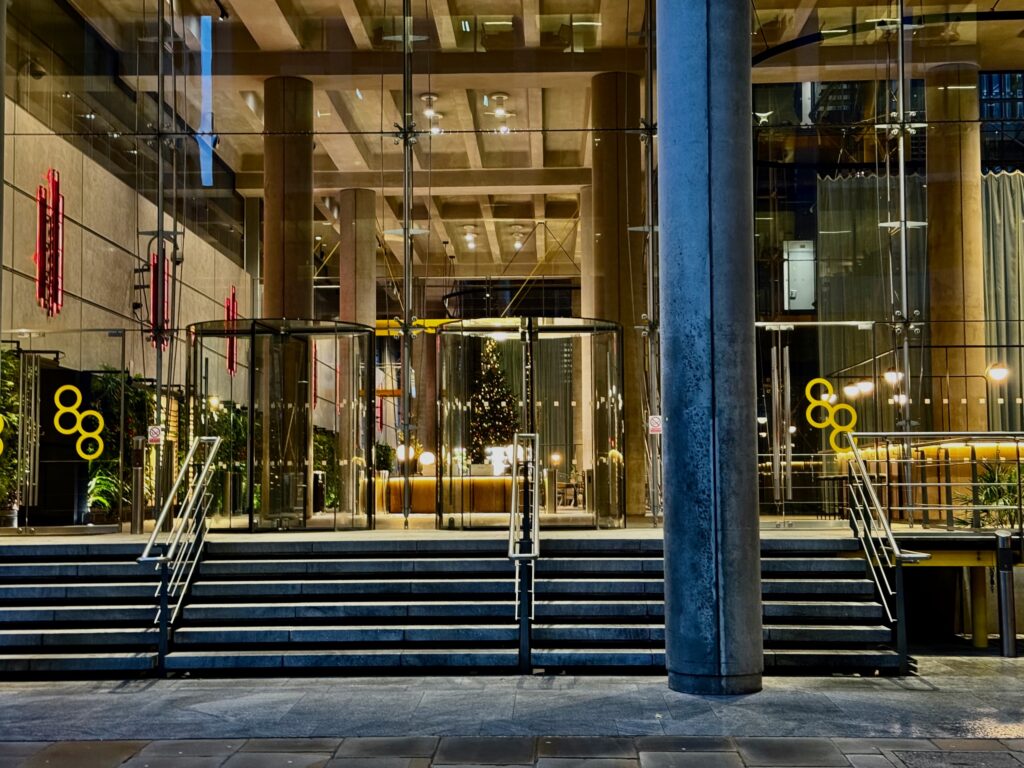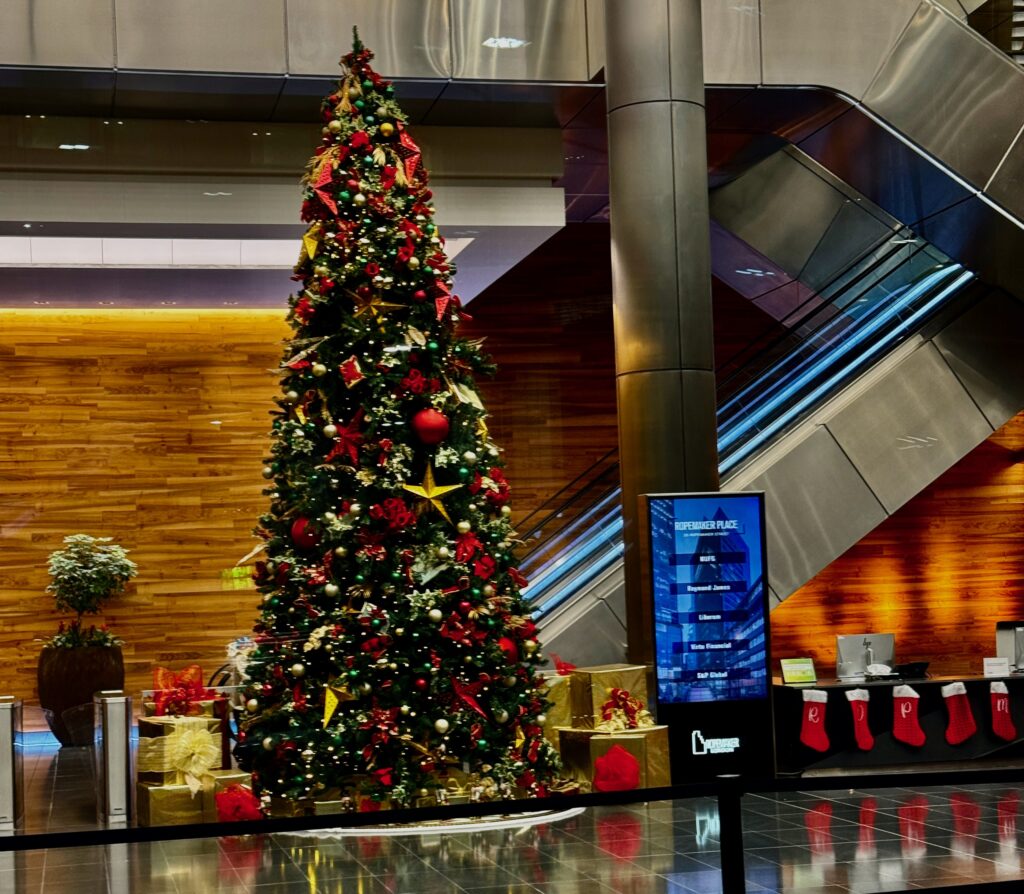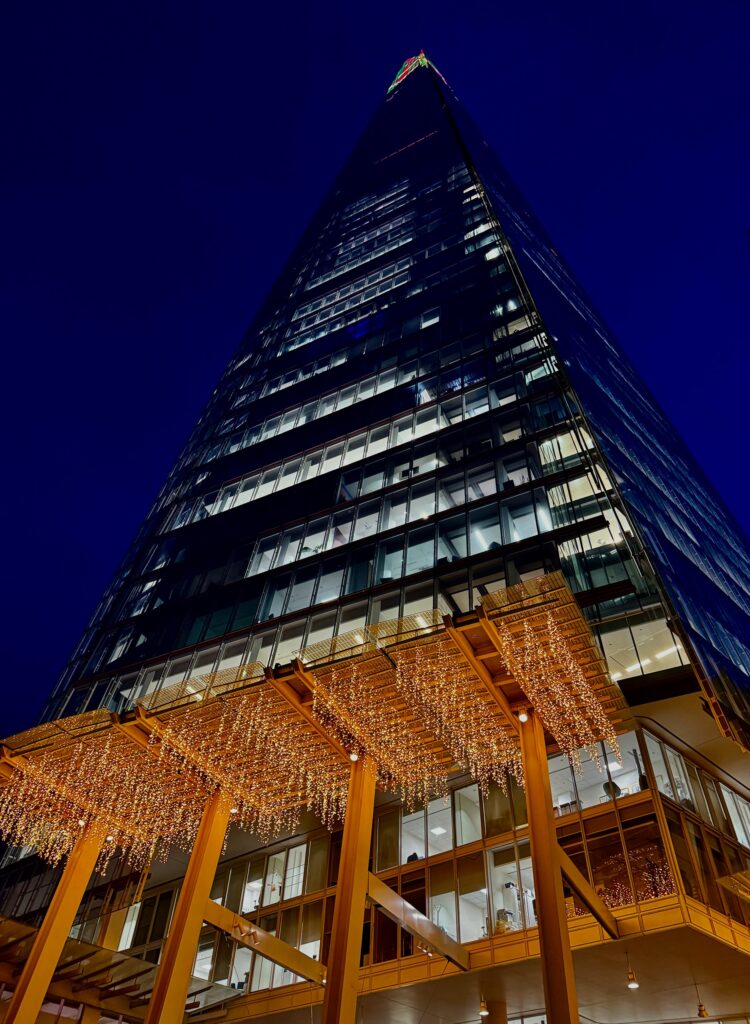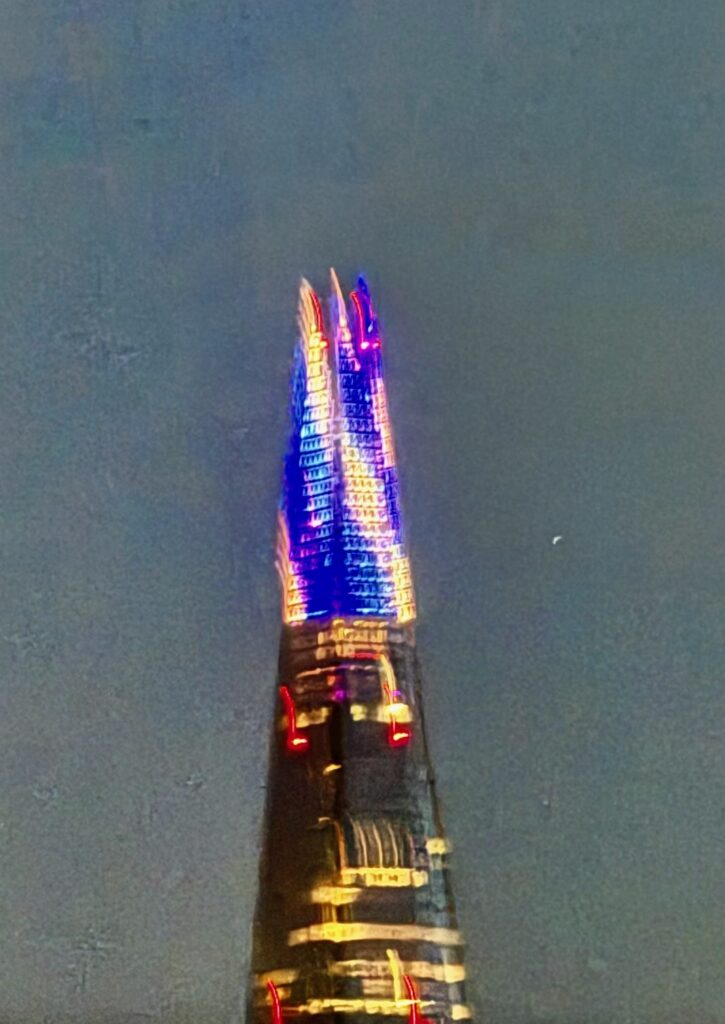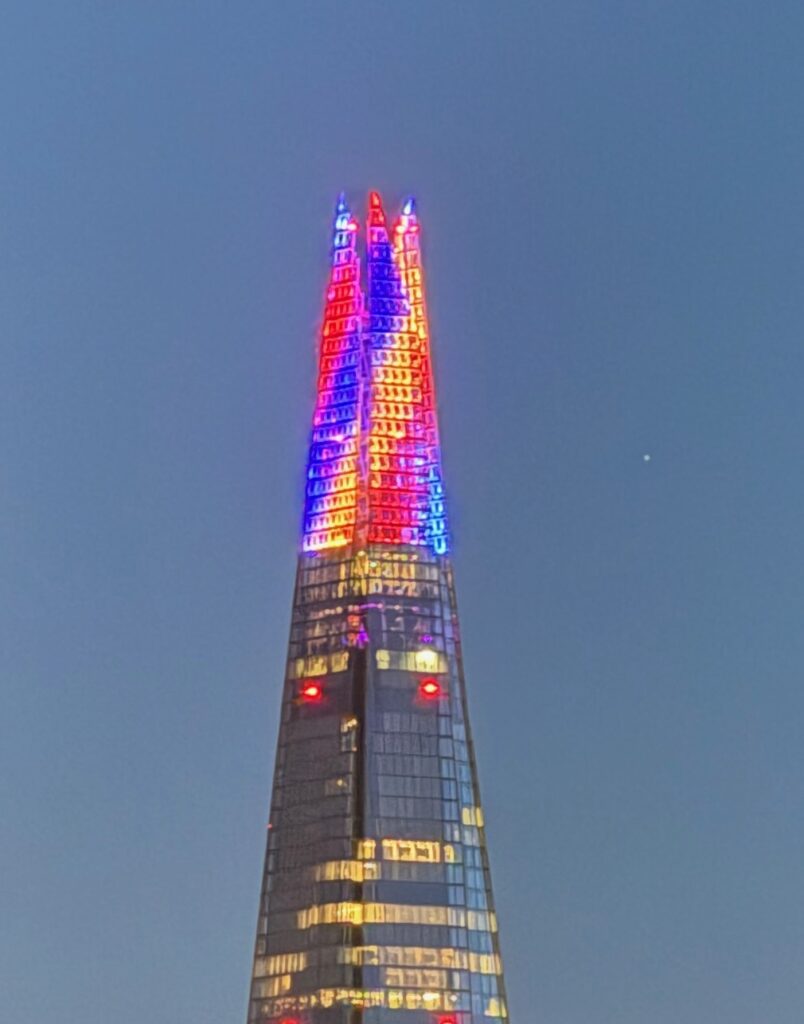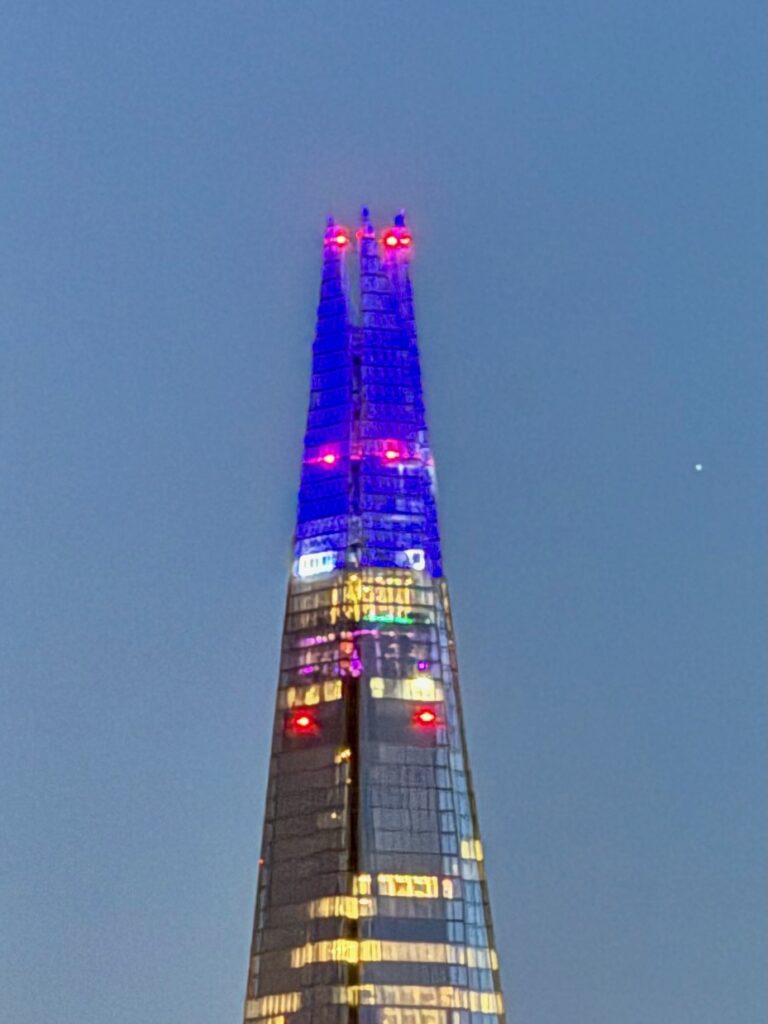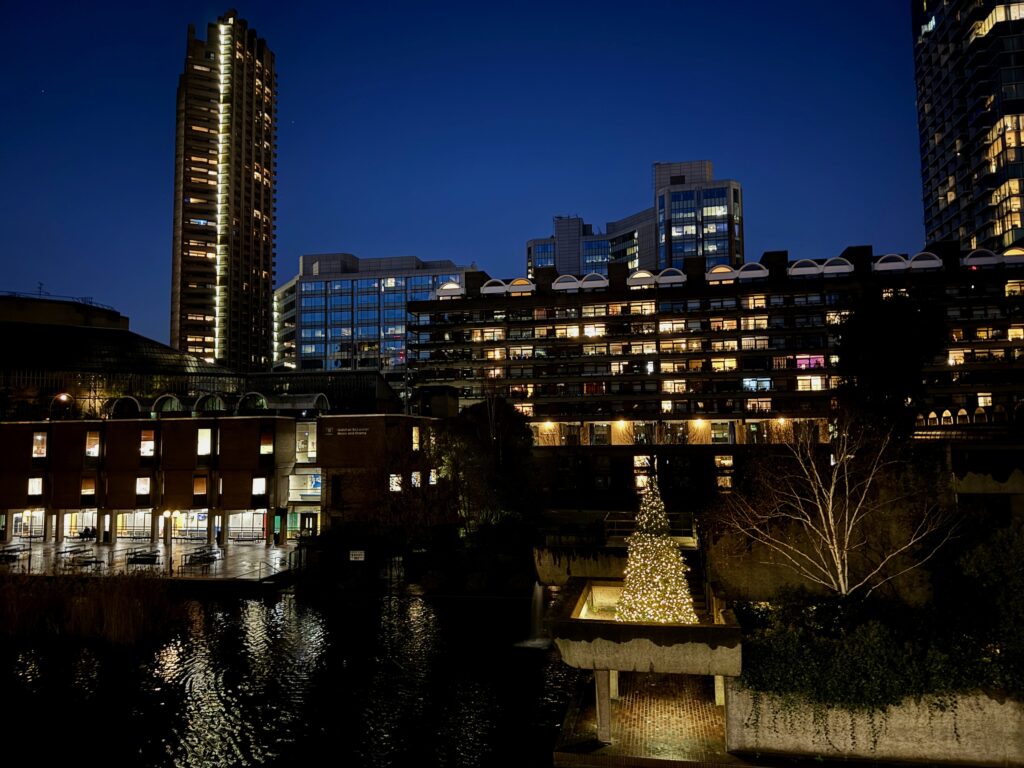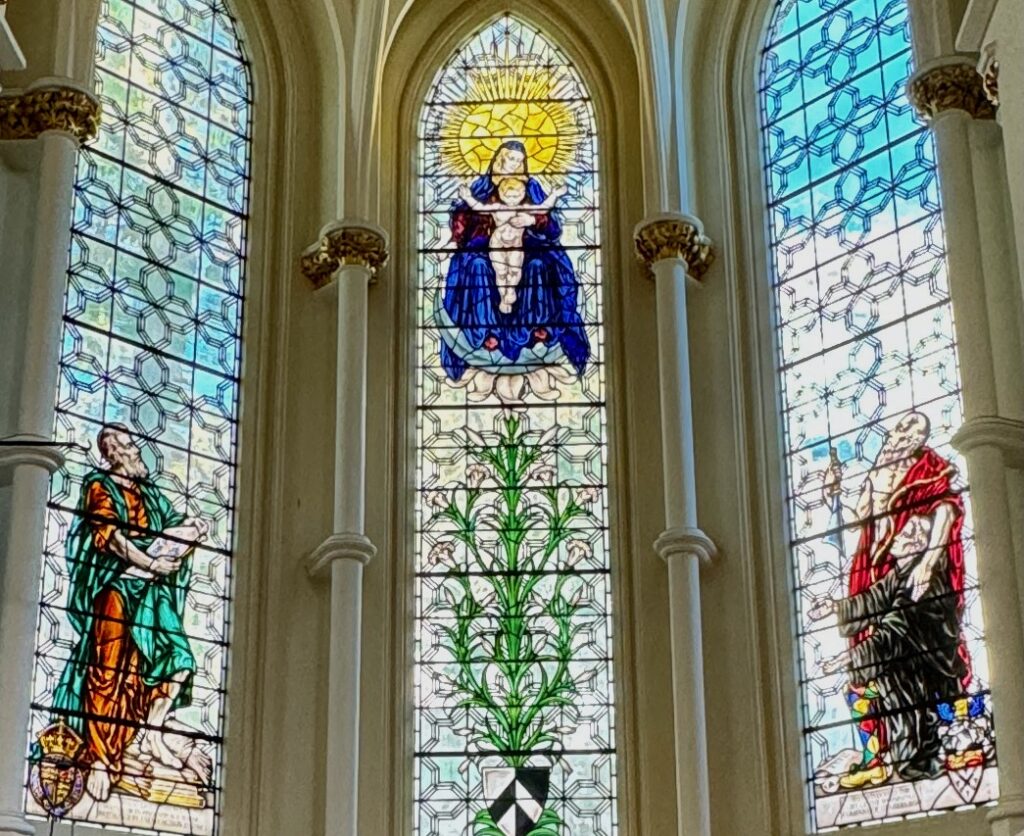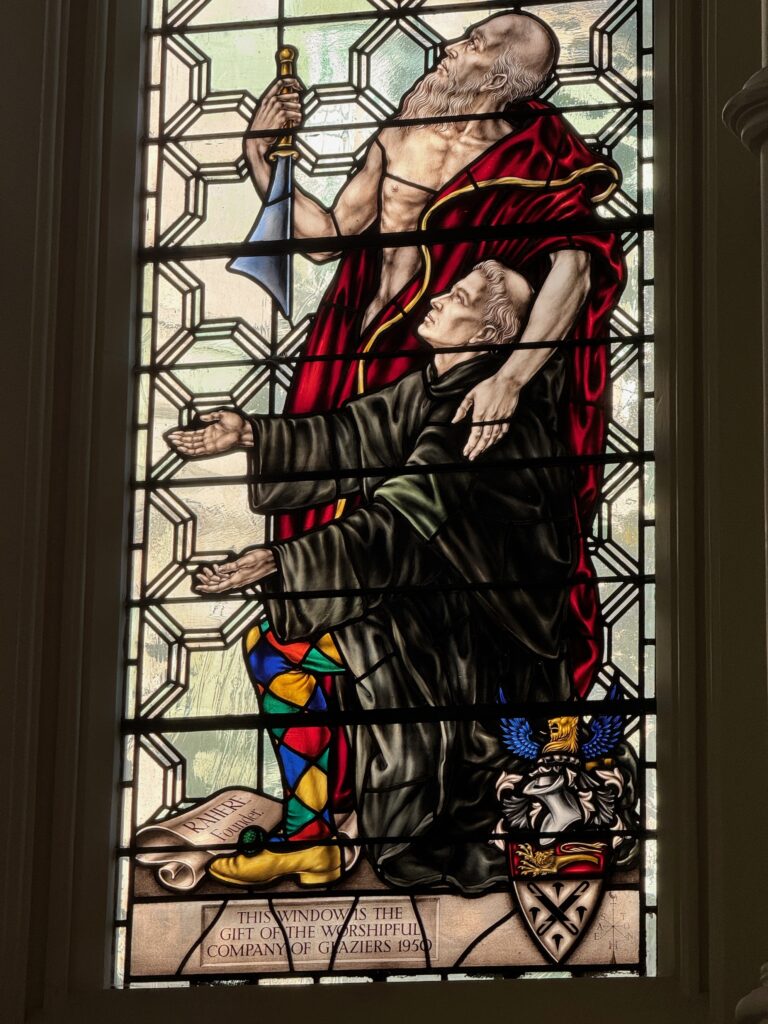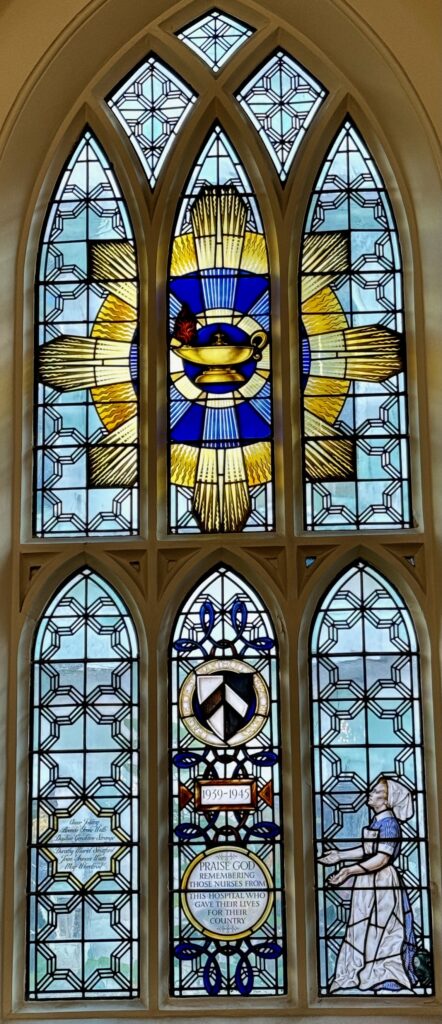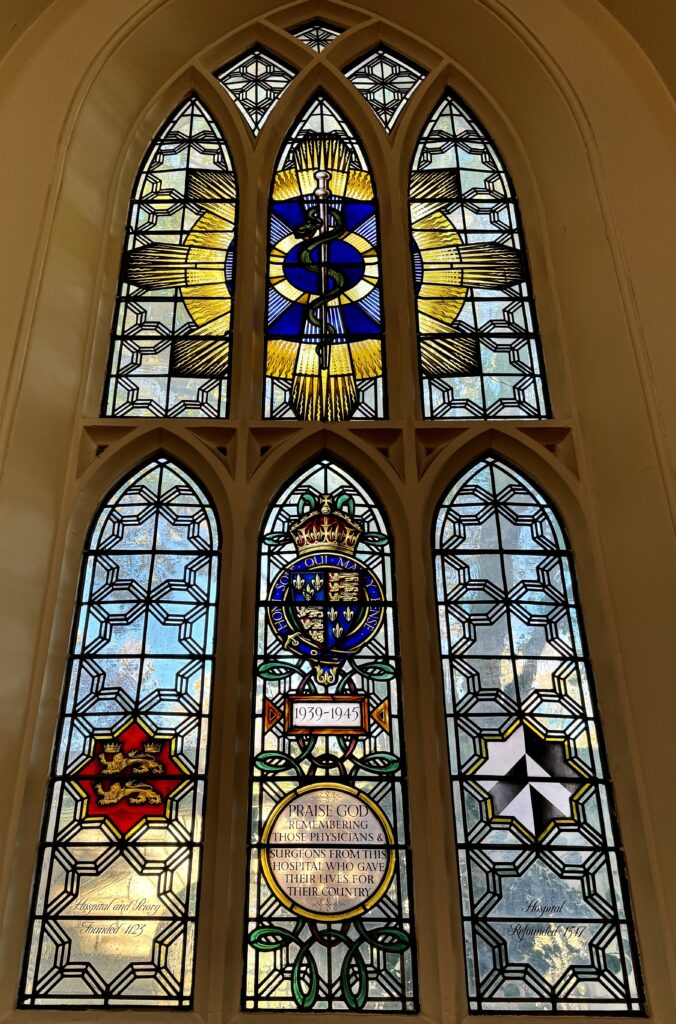Here he sits in Panyer Alley, just beside an entrance to St Paul’s Underground Station, a naked little boy astride what looks like a basket, and a strange inscription precisely dated ‘August the 27 1688’. What is going on?
Sadly the little chap has become very eroded and damaged over the years, and it is pretty surprising that he has survived at all. After a bit of searching I have found a drawing of him, possibly from the 18th or 19th century, which may give us a better idea of what he used to look like …

The pedestal and scrollwork have now disappeared.
I have also found this old photograph, probably early 20th century …

For this picture and other really interesting photos, visit the Spitalfields Life blog Signs of Old London.
As with all mysteries, there are many theories, but all are agreed that the sign really does date from the 17th century since this is acknowledged in trusted sources such as Thomas Pennant’s Of London (1790). What the boy is doing and what he represents are the areas where there is much dispute, for example:
‘Is he: sitting on a pannier (basket), or a coil of rope, or a woolsack, or a barrel?’
‘Is he holding: a bunch of grapes, or a loaf of bread, or his foot (perhaps pulling out a thorn – apparently the carving was once known locally as ‘pick my toe’)?’
‘Does he represent: the bread market that was here in medieval times, and at nearby St Martin’s Le Grand, or the sign of a brewhouse (brewery)? There was a Panyer brewhouse recorded nearby as long ago as 1426.’
‘Does he have any connection whatsoever to the claim to the highest ground?’.
I don’t know the answer to these questions, but one thing that is certain is that this is not the ‘highest ground’ in the City, that description nowadays belongs to Cornhill.
Nearby on the north west corner of Warwick Lane is a small bas-relief of Guy, Earl of Warwick. It is believed that the lane was so named since it was the location of the Warwick Inn owned, not surprisingly, by the Earls of Warwick.
The knight represented is the 10th Earl (c.1272-1315) and the British Museum archives hold a picture of the carving as it was illustrated in Antiquities of London (1791) …

And here is how it looks now …
You can see that the top and bottom sections of the present-day relief were added later, most likely at the time of a restoration in 1817 by John Deykes (an architect and surveyor). Pennants London is a book published in 1805 and its 5th edition (1815) gets a mention on the relief, right down to the page number where the carving is discussed (492). Maybe the publisher paid for the restoration in return for this smart piece of advertising?
Incidentally, whilst researching the Warwicks I came across this reference to the Warwick Inn. Neville, the 16th Earl …
At a meeting of the great estates of the realm in 1547 … lodged himself (there) with 600 men where, says Stowe, ‘there were oftentimes six oxen eaten at … breakfast, and every tavern was full of his meat; for he that had any acquaintance in that house, might have there so much of sodden [boiled] and roast meat, as he could prick and carry upon a long dagger.’
Now that’s what I call a buffet.
On the north west side of nearby Ludgate Circus is this memorial plaque. Wallace sold newspapers on this corner when he was eleven years old …

The memorial is by F.W. Doyle-Jones (1934).
Born out of wedlock in Greenwich in 1875, and with both of his parents itinerant actors, he was adopted by a kindly Billingsgate fish porter and his wife. Asked by a journalist years later to contribute to a celebrity feature entitled ‘What I Owe My Parents’, Wallace replied on a postcard:
‘Sorry, cock, I’m a bastard’.
Despite such a challenging start to life (or perhaps because of it) his story is extraordinary. As well as journalism, Wallace wrote screen plays, poetry, historical non-fiction, 18 stage plays, 957 short stories, and over 170 novels, By 1926, he was knocking out 18 novels a year and by 1929, he was up to 34, and it was claimed that a quarter of all books read in English were by him.
When he turned to writing fiction in 1905 he told his wife he would give his readers :
‘Crime and blood and three murders to the chapter; such is the insanity of the age that I do not doubt for one moment the success of my venture.’
More than 160 films have been made of Wallace’s work and he sold over 50 million copies of his combined works in various editions, The Economist describing him as ‘one of the most prolific thriller writers of [the 20th] century’.
So why is he hardly known at all now compared to his overlapping contemporaries Arthur Conan Doyle and Agatha Christie? His biographer, Neil Clark, sees him as a victim of literary snobbery, being one of the first crime writer to come from a working-class background. Another factor may be that the characters of his investigators, JG Reeder and the gloomy Inspector Elk, were not as seductive as Holmes, Poirot or Maigret. For example, Elk was introduced in The Fellowship of the Frog as ‘tall and thin, a slight stoop accentuated his weediness.’
Wallace’s last piece of work was on one of the most famous movies of all time …
In 1931 RKO invited him to Hollywood to work on an idea that Wallace would generously credit to the director, Merian C. Cooper. However, as Neil Clark makes clear in his biography, the Bodleian’s existing script shows that Wallace conceived the ‘beauty and the beast’ motif himself, the climb up the Empire State building and the aeroplane attack. I’m not sure how the red double decker London bus shown in the poster found its way to New York!
Wallace also created the final scene …
‘Kong opens his eyes, picks the girl up, holds her to his breast like a doll, closes his eyes and drops his head,’
Wallace died in Hollywood on 10th February 1932 after falling into a diabetic coma, compounded by double pneumonia, from which he never recovered.
And finally, would you like a close look at a piece of work by the pioneering modern sculptor Jacob Epstein?
Once again, as in previous blogs, I invite you to pass through the blue doors in Foster Lane to the lovely tranquil garden of St Vedast-alias-Foster …
In the corner you will find Epstein’s Head and Shoulders of Canon Mortlock (1936)…
Mortlock was a personal friend of Epstein’s and also of Max Mallowan (Agatha Christie’s husband) who gave him the cuneiform marked tablet also displayed in the churchyard – see my blog City Churches and Churchyards – more Tales of the Unexpected.
If you would like to follow me on Instagram here is the link …
https://www.instagram.com/london_city_gent/
Copyright : British Museum
